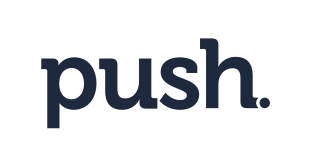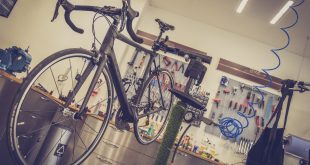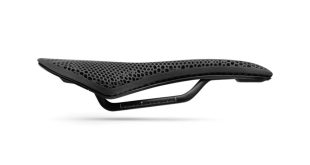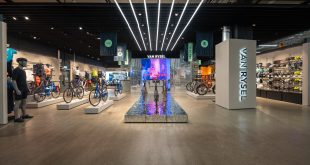Luke Pickering contacted BikeBiz asking for help and advice in opening a bike shop in Gloucestershire. You can read his letter here.
Here are two of the responses we received from BikeBiz readers.
Response #1
James Lydon: "I read the article last month regarding Luke Pickering’s plans to open a new cycle store for the first time and thought I’d chip in with a few words of experience/observation.
I currently work as part of a two-man team in an independent cycling store in a small town. I am generally responsible for website maintenance, stock orders/supplier relations, bike servicing/building and all things shop floor related (merchandising/displays/sales etc).
Sales of bikes and frequency: given the small population of our rural location we actually have a large cycling catchment area and get a lot of cycling traffic around our area, being situated between the City of York and the east coast. We would look to be selling between 10 and 15 bikes per week. Realistically Saturday would see one third of these sales.
At the end of the day bike sales will rely on three main things: 1) Footflow and getting people in the shop (we chain seven bikes outside our store on special offers and the amount of passers by it draws into the store is remarkable). 2) Your Employees… employ experienced or confident staff who don’t ignore customers 3) Price Range: knowing your local market would help with this but £300-2,000 is not a bad price range to aim for.
We also benefit quite a bit from being part of the Cycle to Work scheme. Whilst we do lose a small percentage to these sales, the sheer quantity of these bikes that go out on the scheme is invaluable, especially if the NHS trust mentioned in the article is part of the scheme. Food for thought.
Suppliers and Margins: When I joined the company, they had/have quite a mixed array of bike stock, stocking Dawes/Giant/Orbea/ Massi/Falcon/Raleigh/2×2/Mongoose… the point is… it’s too much, especially for an independent store. I find customers having too much choice in store leads to indecisiveness and can lose you a sale. We stock the majority of our bikes with one supplier and we get a pretty hefty discount because of that.
As far as margins are concerned 35 per cent is a decent figure to aim for. I am solely responsible for pricing our stock and I generally aim for between 30-35 per cent. But again, you can increase this by committing yourself to certain suppliers.
Sale of Return: Never going to happen. You’ll soon notice the reps/suppliers do what they’re supposed to and entice you to buy bulk at special margin costs. Is this a good idea? Yes… if you know your local cycling economy. Remember those bikes I said we chain outside to lure customers in? Well they’re 2009/2010 models that have been stored away. I guess I’m trying to say you would benefit from only doubling up on sizes of what you want to order in… to begin with at least. Don’t triple or quadruple order sizes of bikes unless they’re at a ridiculous price and you have the storage space. What suppliers may offer you are demo bikes, usually one model bought at a cheaper rate on the understanding that you want to let your customers ride out the bike to convince them to buy one. You may not get this offer straight away; it’s something a long/constant relationship with a supplier would bring about. We, for instance, allow customers to ride shop floor bikes outside if they need a final bit of encouragement.
Final Observations: Whilst we try to maintain good margins, customer service and make a profit like any business, if you’re going to start a new store the best two bits of advice I could give you are this: 1) Stock a healthy range of kids bikes ranging from £80-300, 12"-26" wheel sizes… summer holidays, Easter holidays, birthdays, Christmas… we sell on average more kids bikes than adults bikes every week. 2) Servicing and repairs: This is our bread and butter income…£15 service here, £70 repair there. If you find you don’t sell the numbers of bikes you set out to, repairs and servicing will at least pay your employees. The most valuable and highest margin commodity in a cycling shop is labour.
I wish you all the success with your new store. One thing you’ll find in the cycling industry is that for those of us who are passionate or even have just a passing interest, you’ll always be making new friends eager to tell you of their travels and adventures.
Response #2:
Martin Brown, Director, Bike Shack (Petersfield): " Firstly I wish you good luck in your new venture as these are tough times for every one at the moment. But I think the market as a whole is defiantly on the rise.
I started up on my own just over three years ago, just before the credit crunch. I didn’t start completely clueless as I had already worked for another shop in the cycle trade for a few years previous. However there was still a hell of a lot to learn before the shop became successful.
Our shop is still growing by about 20 per cent year-on-year and now is ticking over nicely. I don’t think it’s ever going to make me rich but it’s nice being your own boss and also nice to wake up in the morning knowing that you do something you enjoy.
Anyway hopefully I can help, I have split my advice into sections…
Size and Location – I think the site you are looking at is set in a really good area, with plenty of passing trade and a decent looking shop front. This will really help you boost sales. Bringing people into your store is obviously a big factor and this store looks like it has really good potential to do so. With decent POS and a tidy up this store could really look the part. We are roughly the same size store as yours and we have got 75 bikes on display, along with all the necessary P&A.
Bike Sales – This is a really hard area to focus on as it’s different for every shop. For us bike sales change every week; this can be dependent on the weather but also the time within the month i.e more sales closer to pay day.
Seasonally, obviously the spring/summer months are the best for bike sales, Christmas can also be good for kids bikes. But from what I have found don’t bet on Christmas as being a savour as we have found Christmas to be much harder now than it ever has been. I think the big chains like Halfords, Tesco bikes and Argos have had a big effect on IBDs when it comes to smaller kids bike sales.
We find most of our bike sales coming in on Saturday, especially the family bikes. So you may want to look at extra staff just to cover Saturdays. Bike sales through the week are steady but be prepared for some odd days where you may not sell a bike at all. This is where your service work should tick over and keep you afloat.
As for actual numbers I cannot give you any estimates; as I say, our sales change every week. All I will say is play it safe for the first few months, get enough bikes in to fill the shelves but don’t order lots of multiples for each, just enough to keep you going. This way you can see what sort of bikes are selling well at what times and at what price points. This way you won’t be left with lots of old stock that you can’t sell and also have capital tied into. Distributors are usually well stocked this time of year so you can always order more.
Suppliers and Margins – You are right about the margin of around 35 per cent, this is what most brands are offering. However there is always room for play, meaning that many suppliers often offer monthly deals on different P&A and bikes. If you take the opportunity when it arises you can end up getting some real bargains, but obviously the general rule is the more you order the better the rate. Keep in contact with you account manager to get the best deals. Also remember that after a short while trading suppliers will offer you credit on most items. This will help as if you plan it right you can often sell a bike before having to pay the supplier. You can use this to your advantage.
As far as suppliers go, I would widen your horizon and take on a few different suppliers of P&A and Bikes. This also gives your customers more of a choice when it comes to buying. You should never be saying to a customer that you can’t get hold of an item or brand they want as they will walk away with nothing and probably never come back.
Sale or Return – Suppliers will not send out bikes on sale or return, they may help you out in the first year but generally once you have bought a bike you are stuck with it. This is why you need to be careful what you initially order until you know for sure what is selling.
Key Points
-As an IBD your best bet is to concentrate on what your bigger competitors can not always offer, such as good personal service. Greet them upon entering, and assist in a sale. Also have the time for them rather than rushing them through the store.
-Keep in touch with what’s going on in the local community and get involved.
-With you being right next door to an NHS trust employing 800 people it’s a must for you to sign onto the Cycle Schemes.
-Most of all read BikeBiz! This will keep you in touch with what’s going on in cycle sector, where to buy from and the latest new products and ideas.
 BikeBiz Bicycle and cycling retail news
BikeBiz Bicycle and cycling retail news



